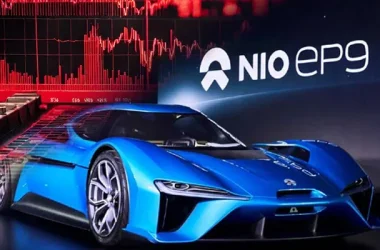Advanced Micro Devices, or AMD, (NASDAQ: AMD) is a well-known name between investors in the semiconductor industry, and is often compared to chip-making giants like Nvidia (NASDAQ: NVDA). Recently, the company has been grabbing the attention of a whole new crowd. Big names on Wall Street, including investment firms like Morgan Stanley (NYSE: MS) and HSBC (NYSE: HSBC), are starting to turn bullish on AMD stock, which means they think now is a good time to buy in. Here’s why.
AMD’s Recent Performance
The past year has been an incredible one for AMD stock investors, as shares of the chipmaker have shot up an impressive 64%, outperforming the PHLX Semiconductor Sector index’s gains of 57% by a good margin. Now, AMD stock is up by 12.41% year-to-date, and investors have been buying the stock hand over fist in anticipation of a rapid acceleration in the company’s growth thanks to the high demand of AI chips. The newest bank to jump on the AMD bandwagon is HSBC, whose extremely bullish price target on the stock was seen as a great endorsement and a positive catalyst for the stock.
In April, AMD stock was down 14%, and many attributed this to various reasons like the Fed delaying the interest rate cuts and the U.S.-China ongoing chip war that prevented AMD from introducing new products to China. Therefore, HSBC’s bullish price target upgrade couldn’t have come at a better time, as it sent the stock 2% higher.
HSBC’s Bullish Stance on AMD Stock
HSBC analyst, Frank Lee, recently upgraded AMD shares to “Buy” from “Hold”, boosting his price target to $225 from $180, which implies an upside of about 45% from where the stock is trading now.
Some analysts are saying that Nvidia’s Blackwell announcement during its GTC 2024 event definitely contributed to AMD’s dip, as it meant more competition for AMD to deal with. But, Lee believes that AMD can take Nvidia on. He wrote that it’s unlikely for Nvidia to have 100% of the AI GPUs market, and his base case assumes that AMD will have 10% of the market in 2025.
That would potentially translate into $12.3 billion in AI GPU revenue for AMD, according to Lee, while the consensus view is around $9 billion. In a bullish case scenario, however, AMD could capture 15% of the market in 2025, which would imply revenue potential of $18.5 billion. He also wrote that AMD shouldn’t be too worried about Nvidia’s upcoming Blackwell chips, noting that AMD’s MI300 series is more of a competitor to older Nvidia hardware.
In other words, Lee thinks that Nvidia’s new chips will likely serve a different purpose than AMD’s, so they won’t be direct competition to AMD. Additionally, he said that direct competition between the two companies will only exist once AMD introduces new, upgraded chips to its MI300 line.
More Analysts are Bullish on AMD
It’s not just HSBC that’s betting big on AMD stock now. In fact, a lot of investment firms and banks have recently aired their opinions about the company. For instance, Wall Street has been upbeat about AMD’s prospects, and then the stock received three upgrades earlier this month from Barclays (NYSE: BCS), Susquehanna Financial Group (OTCMKTS: SQCF), and KeyBanc Capital Markets.
Barclays upped its price target on AMD from the earlier estimate of $120 to $200, while Susquehanna and KeyBanc increased their price targets from $170 and $195, to $200 and $270, respectively. It must be said that Wall Street analysts aren’t always right, but these price targets suggest that AMD stock is set for healthy gains.
Why Wall Street is Bullish on AMD Stock
Aside from AMD’s dominant position in the PC market thanks to its impressive Ryzen processors, Wall Street is also bullish on the company’s AI potential. AMD recently unveiled the new Ryzen Pro 8040 Series, which was built for business laptops and mobile workstations. These new chips are expected to be available in platforms from HP (NYSE: HPQ) and Lenovo (OTCMKTS: LNVGY) in Q2 of this year, and will help AMD expand its share in the AI PC market.
Of course, there’s a lot of opportunity there for AMD. According to market research firm Canalys, 19% of PCs shipped in 2024 will be AI-capable, and this percentage will grow to 60% by 2027. Now, it’s not all sunshine and rainbows for AMD. Competition is fierce, especially from Nvidia’s H100s. But, AMD is known for offering more competitive prices for its products compared to Nvidia, and this could be a major factor for businesses looking to invest in AI hardware without breaking the bank.
While the future is never guaranteed, AMD’s business model has some interesting ingredients that could fuel their growth for years to come. This is a story that analysts at Morgan Stanley and the Northland Capital Market will be watching closely. Morgan Stanley analysts have recently stated that compute remains the central area of interest in the new reporting season, with AI exposure increasingly seen as the key driver of alpha generation. Similarly, Northland Capital Markets analyst, Gus Richard, once estimated that AMD could corner a 13% share of the AI chip market in 2027, generating an estimated $16 billion in revenue.
This suggests that AMD’s AI revenue is expected to double each year from 2024, based on the company’s estimate that it will sell $2 billion worth of AI chips this year. However, this is not the only estimate. Others, like KeyBanc, indicate that AMD could reach the $16 billion landmark at a faster pace. Again, this is all attributed to the expected growth in the AI market, which will be followed by growing demand for Nvidia’s AI processors and accelerators.
The company’s chips, especially the ones specifically designed for AI workloads, are built to handle the massive amount of data and complex calculations, which is why they’re perfectly positioned to capitalize on the AI boom.
AMD Stock Forecast
AMD has been developing AI-focused hardware for a while, with products like the EPYC processors and the Instinct accelerators, so it’s already established its name as an important player in the AI chip market. But, it’s not just about selling powerful chips for AMD. In fact, the company is also making a conscious effort to become more developer-friendly, creating software tools and libraries that make it easier for programmers to build and run AI applications on AMD hardware.
This open and accessible approach could attract more developers to the AMD ecosystem, further solidifying its position in the AI landscape. It’s important to note that this growth that analysts expect for AMD won’t happen overnight. Developing and integrating AI into various fields takes time. Therefore, while the future looks bright for AMD in the world of AI, it’s likely to be a gradual climb rather than a sudden spike.
Overall, the rise of AI presents a significant opportunity for AMD, and if the company continues to offer powerful hardware, developer-friendly tools, and competitive pricing, it could be well-positioned to capitalize on this growing market. And we could see even bigger upgrades in the future.
Disclaimer
Please visit and read our disclaimer here.









